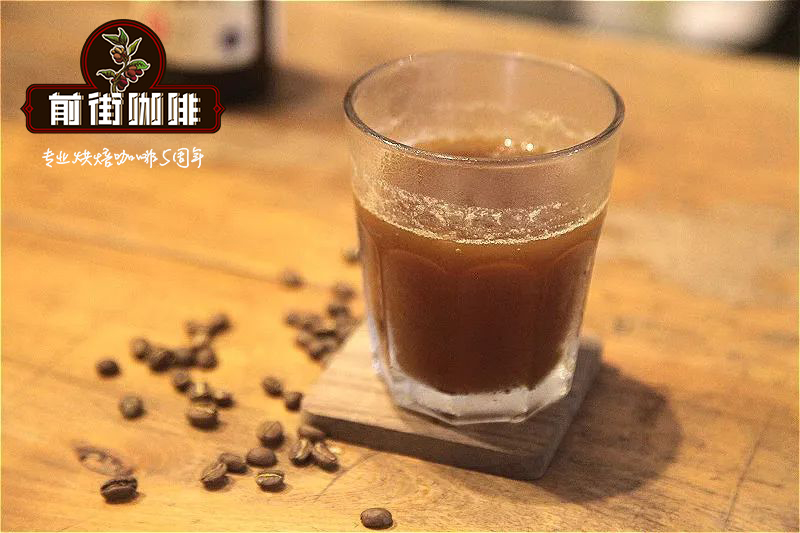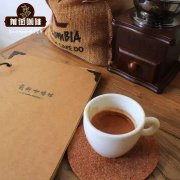Coffee unique to India: Indian Monsoon Malaba Coffee Story _ how much is a pack of Indian coffee beans

Professional coffee knowledge exchange more coffee bean information please follow the coffee workshop (Wechat official account cafe_style)
The story goes back to the 19th century, more than a hundred years ago, when India was a British colony. Coffee produced from India is shipped to England. Before the opening of the Suez Canal, it took a detour from India to Britain through the Cape of good Hope at the southern tip of Africa, across the Indian Ocean and Atlantic Ocean, and experienced a six-month sea voyage. Because of the sea breeze and the moist air on the sea for a long time, the coffee beans have changed from green to yellow and white when they arrived in Britain, and their volume has expanded, which is completely different from the original fresh beans. However, people are surprised to find that the "spoiled" coffee beans have a more unique flavor after roasting-the mellow thickness is higher, but the acidity is lower, and the different flavor is more tasteful than the ordinary Indian coffee.
Of course, in the world a hundred years later, the Suez Canal has long been opened, sea routes have been greatly shortened, more advanced and fast ships have been developed, and with the improvement of packaging technology, coffee beans have rarely suffered damp deterioration on board. But the taste of the classic "wind-stained coffee" is for many coffee drinkers.
As a result, there is a new way to deal with it-Indian monsoon coffee. Indian Malaba monsoon coffee, to be exact.
The picture shows the Indian monsoon Malaba coffee, and the upper right corner shows Ethiopia's washed raw beans. See the difference?
Because this unique treatment came into being in the Malaba region along the Indian Ocean in western India. In the tropical monsoon climate of the Indian mainland, there is a southwest monsoon blowing from the sea every year during the rainy season from June to September. Locally produced coffee beans are specially placed in a special open warehouse to accept the warm and humid sea breeze, and in the process the coffee beans are constantly stirred to ensure uniform acceptance of sea breeze and moisture. The whole treatment lasted almost throughout the rainy season, lasting for 3 to 4 months, and finally the coffee beans changed from green to yellowish white, which looked like "old beans" after being drenched in the rain or aged for a long time, and because they were exposed to moisture for a long time, its volume is also more expanded. Finally, the unprocessed beans are manually selected and re-bagged, and the whole processing process is completed.
After this process, coffee beans are equivalent to being "pickled" by sea breeze and moist air in the rainy season, the original acidity decreases, while the mellow thickness increases, and produces a special earthy flavor and dried fruit flavor, and sometimes has a unique spice flavor, which is difficult to feel in coffee from any place of origin.
It is said that when Britain transported tea at that time, it was due to the damp fermentation of tea leaves during the long sea transportation, which affected the preference of the British for black tea at that time, and also made the later famous English black tea. The formation of monsoon coffee is similar to that of black tea. However, according to the way of processing, monsoon coffee is more inclined to our Pu'er tea, experiencing artificial "aging", reducing the green astringency and acidity of the coffee and achieving a different mellow taste.
Haha, after saying so much, do you also want to try this monsoon Malaba coffee?
Indian coffee bean brand recommendation
The Indian coffee beans baked in Qianjie Coffee-Wind-stained Malaba Coffee are fully guaranteed in terms of brand and quality. And more importantly, the performance-to-price ratio is extremely high, a pack of half a pound 227 grams, the price is only about 80 yuan. According to the calculation of 15 grams of powder per cup of hand-brewed coffee, 15 cups of coffee can be made in a bag, and each cup of coffee costs only about 5 yuan, which is very cost-effective for coffee shops to sell dozens of yuan a cup.
Qianjie coffee: Guangzhou bakery, the store is small but a variety of beans, you can find a variety of unknown beans, but also provide online store services. Https://shop104210103.taobao.com
Important Notice :
前街咖啡 FrontStreet Coffee has moved to new addredd:
FrontStreet Coffee Address: 315,Donghua East Road,GuangZhou
Tel:020 38364473
- Prev

Serious flooding in India Coffee production reduced _ Coffee grown in India? how about Indian Coffee
Professional Coffee knowledge Exchange more coffee bean information Please pay attention to coffee workshops (official Wechat account cafe_style) previous torrential rains have triggered floods and landslides, causing damage to large tracts of coffee forests in southern India and possibly causing coffee production in India to fall to the lowest level in 21 years in the next season. Southern India is the third largest coffee producing region in Asia, and the state-run coffee shop had expected
- Next

Indian coffee bean brand recommendation _ Indian style stained Malaba coffee tastes good? how much is Indian coffee?
Professional coffee knowledge exchange more coffee bean information please follow the coffee workshop (Wechat official account cafe_style) Indian style-stained Malaba coffee, also known as Indian monsoon coffee (Monsooned Coffee), is inadvertently created a new flavor. In the 17th and 18th centuries, India shipped coffee beans to Europe by sailboat, which took six months, and the raw beans were placed at the bottom of the barn.
Related
- Does Rose Summer choose Blue, Green or Red? Detailed explanation of Rose Summer Coffee plots and Classification in Panamanian Jade Manor
- What is the difference between the origin, producing area, processing plant, cooperative and manor of coffee beans?
- How fine does the espresso powder fit? how to grind the espresso?
- Sca coffee roasting degree color card coffee roasting degree 8 roasting color values what do you mean?
- The practice of lattes: how to make lattes at home
- Introduction to Indonesian Fine Coffee beans-- Java Coffee producing area of Indonesian Arabica Coffee
- How much will the flavor of light and medium roasted rose summer be expressed? What baking level is rose summer suitable for?
- Introduction to the characteristics of washing, sun-drying or wet-planing coffee commonly used in Mantenin, Indonesia
- Price characteristics of Arabica Coffee Bean Starbucks introduction to Manning Coffee Bean Taste producing area Variety Manor
- What is the authentic Yega flavor? What are the flavor characteristics of the really excellent Yejasuffi coffee beans?

